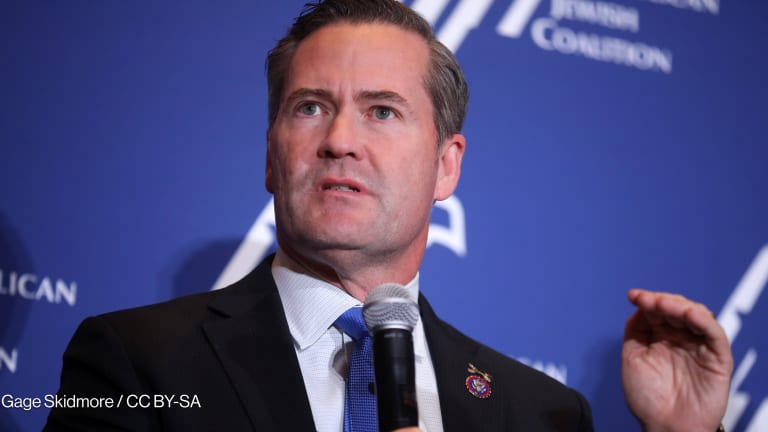
WASHINGTON — The Trump administration released the implementation plans for its Women, Peace, and Security Strategy on Thursday, eight months after the congressionally mandated deadline.
The Department of State, U.S. Agency for International Development, Department of Defense, and Department of Homeland Security were required to produce agency-specific plans by the WPS Act of 2017, which mandates U.S. support for women’s participation in conflict prevention and resolution and in fragile contexts.
U.S. Ambassador for Women’s Issues Kelley Currie called WPS a “priority issue” and said the administration has built “concrete and specific” deliverables that can be used to evaluate progress of implementing the WPS strategy.
More on WPS:
► Delayed Trump administration WPS implementation plans to be released soon
► Lawmakers question who will implement US Women, Peace, and Security Strategy
“We’ve been working really hard for the past year to create these plans against that strategy and to make sure that they’re mission-specific, innovative, measurable, and able to hold us all accountable to that strategy,” Currie said Thursday at a virtual event marking the release of the plans.
“Our implementation plan is, we think, going to help transform our foreign policy apparatus and the way we do business. That’s the goal.”
The delay in releasing the WPS implementation plans is one of a series of delays in meeting deadlines set out in the WPS Act. The administration had one year after the bill was passed to release the WPS strategy, but did not do so until June 2019 — six months late. The implementation plans were due 180 days later, in October. In January, the State Department attributed delays to the time and logistics required to coordinate the State Department, USAID, DOD, and DHS around the development of their agency plans.
Plans by the four agencies will take “significant steps” to promote leadership, involvement, and safety of women around the world, the White House said in a statement on Thursday.
The implementation plans lay out how the U.S. national security agencies will meet several strategy objectives by 2023, including increasing women's participation in peace efforts and ensuring equal access to government and private assistance programs.
“Our implementation plan is, we think, going to help transform our foreign policy apparatus and the way we do business. That’s the goal.”
— Kelley Currie, U.S. Ambassador for Women’s IssuesThe USAID implementation plan lays out how WPS will be integrated into agency strategies and programs, such as including frequent consultations with local women’s organizations. It also pledges to build staff and institutional capacity by establishing a WPS-related training plan for staff working on conflict, crisis, and transition.
The 26-page USAID and 54-page State Department plans outline how each agency will achieve four “lines of effort:” participation of women in decision-making processes in conflict and crisis; protection of human rights and safety with access to humanitarian assistance; ensuring internal U.S. coordination and focus on the WPS agenda; and encouraging partners to similarly encourage women’s participation in peace and security processes.
“This plan will help advance WPS’ strategy through effective, coordinated action across our development and humanitarian assistance,” said Julie Cram, USAID deputy assistant administrator for economic growth, education, and environment, during the virtual event.
Cram said that USAID leadership in Washington as well as in over 60 missions around the world will work to elevate the WPS agenda, particularly as the COVID-19 pandemic could lead to an increase in conflict.
The USAID plan also outlines six regional strategies for WPS implementation in different areas in the world, and a list of the metrics the agency will use to monitor and evaluate implementation.
According to USAID Acting Administrator John Barsa, the agency has already spent $27 million in dedicated WPS funding on programs to advance women's “meaningful” participation in peace processes; help women and girls affected by violent extremism; and increase the protection of women and girls in conflict areas. USAID has spent $200 million in programming aligned with the WPS strategy, he said in a statement.
Cram stressed the importance of ensuring WPS programming doesn’t only engage women.
“We certainly cannot continue to talk to ourselves,” Cram said. “One of the things that USAID is doing is having a much more focused effort on engaging men and boys in all of what we call our gender programming.”
Lyric Thompson, senior director of policy and advocacy at the International Center for Research on Women, said that civil society has played a key role in pushing the WPS agenda forward, from the adoption of the U.N. Security Council WPS resolution in 2000 to the development of the U.S. strategy.
“Better late than never, the release of these plans during a moment of national reckoning as to how we define security, reduce use of lethal force, and acknowledge the underlying ‘isms’ that have shaped our institutions to exacerbate — rather than resolve — inequality, is significant,” Thompson wrote in an email to Devex.
“It’s also important to note that today we received the government’s plans to implement this agenda, not a report on the impact of implementation to date. That will be the real test of how these principles bear out in practice.”








